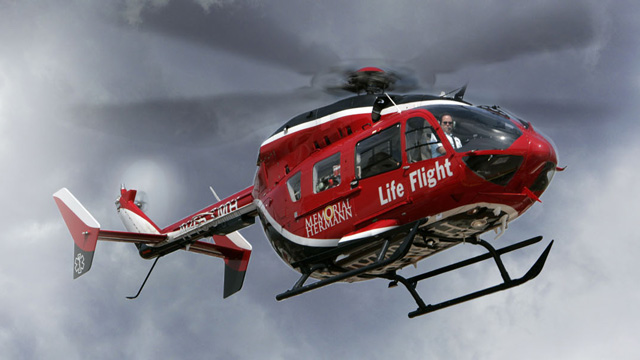The Red Duke Trauma Institute and Children’s Memorial Hermann Hospital care about the safety of you and your child. Our pediatric emergency department is participating with the Texas Drowning Prevention Alliance drowning prevention initiative by distributing water watcher tags and water safety checklists to all families that visit the Pedi ED. You can help ensure the safety of your child in and around water by familiarizing yourself with the statistics and safety tips below.
Water Safety for Children
Drowning is the leading cause of accidental injury death among children ages 1 to 4 in the United States.
Children can drown in as little as one inch of water and therefore they are at risk in bathtubs, toilets, buckets with water/liquids, pools, spas and hot tubs.
Infants (under age of 1)
More than half of drownings among infants occur in bathtubs, with the majority of these occurring without active adult supervision.
Toddlers (ages 1 to 4)
More than half of drownings among children ages 1 to 4 are pool related. Most children who drown in swimming pools were last seen in the home, had been missing from sight for LESS THAN FIVE MINUTES and were in the care of one or both parents at the time of the drowning.
Children (ages 5 to 14)
Children ages 5 to 14 most often drown at sites such as rivers, lakes and oceans. Most of these children were not wearing personal floatation devices (PFDs) or life jackets.
The scary truth: Children that are drowning often will not scream, call for help, splash or struggle. Drowning can happen quietly and quickly.
Play it safe around water:
- ACTIVE Adult Supervision
- Stay where you can see, hear and reach children that are in the water.
- Learn CPR
- Never leave a child alone in the bathtub, even for a minute!
- Teach children to swim.
- Children should never swim alone and swim only in designated and supervised swimming areas.
- If you live in an area with a pool, make sure that there are barriers around the pool to keep children out when you are not able to supervise them.
- Pool fences with self-closing and self-latching gates.
- Empty all buckets, wading pools and other containers and store them upside down and out of reach of children.
- Use life jackets and personal flotation devices
Boating & Water Safety for Adults
Drowning is the fifth leading cause of injury death in the United States. Use these simple strategies from the CDC to keep you and your family safe this summer.
- Supervision - Never leave your children unattended while they are swimming or playing around water. Drowning can happen quickly and quietly. Remain within arms’ reach of preschool aged children at all times.
- Life Jackets - Wear a U.S. Coast Guard approved life jacket. Do not use air-filled or foam toys, such as "water wings", "noodles", or inner-tubes, instead of life jackets. These toys are not life jackets and are not designed to keep swimmers safe.
- The Texas law for personal flotation devices states: All PERSONAL FLOTATION DEVICES (PFD) must be U.S. Coast Guard approved, in serviceable condition, readily accessible, and of the appropriate size for intended user. All children under 13 years of age in all vessels under 26 feet in length must wear a U.S. Coast Guard approved wearable PFD while underway. Underway means not at anchor, made fast to the shore, or aground. All vessels, including canoes, paddle craft, and kayaks, must be equipped with one Type I, II, III or V wearable PFD for each person on board. A Type V PFD is acceptable only if used in accordance with the specific instructions on the label of the device. Vessels 16 feet and longer, excluding canoes and kayaks, are required to be equipped with one Type IV throwable PFD in addition to the Type I, II, III, or V PFD required for each person on board. Inflatable PFDs are authorized only when used in accordance with requirements as presented on U.S. Coast Guard approval labels.
- Buddy System - Always swim with a buddy. Select swimming sites that have lifeguards when possible.
- CPR - CPR saves lives. Learn CPR. The earlier you can initiate CPR, the better the chance of a good outcome.
- Stay Sober - Alcohol use is involved in up to 70% of deaths associated with water recreation. Avoid alcohol before or during swimming, water skiing or boating.
- Learn to Swim- research has shown that formal swimming lessons can reduce the risk of drowning among children aged 1 to 4 years. However, children must still have constant, careful supervision when around water.
- Weather - Know the local weather conditions and forecast before swimming or boating. Strong winds and thunderstorms with lightning strikes are dangerous.
- Seizure Disorder Safety- If you or a family member has a seizure disorder, provide one-on-one supervision around water, including swimming pools, and always wear a life jacket.
Contact Us
For information on Injury Prevention, email our Injury Prevention Coordinators at traumaprevention@memorialhermann.org.
